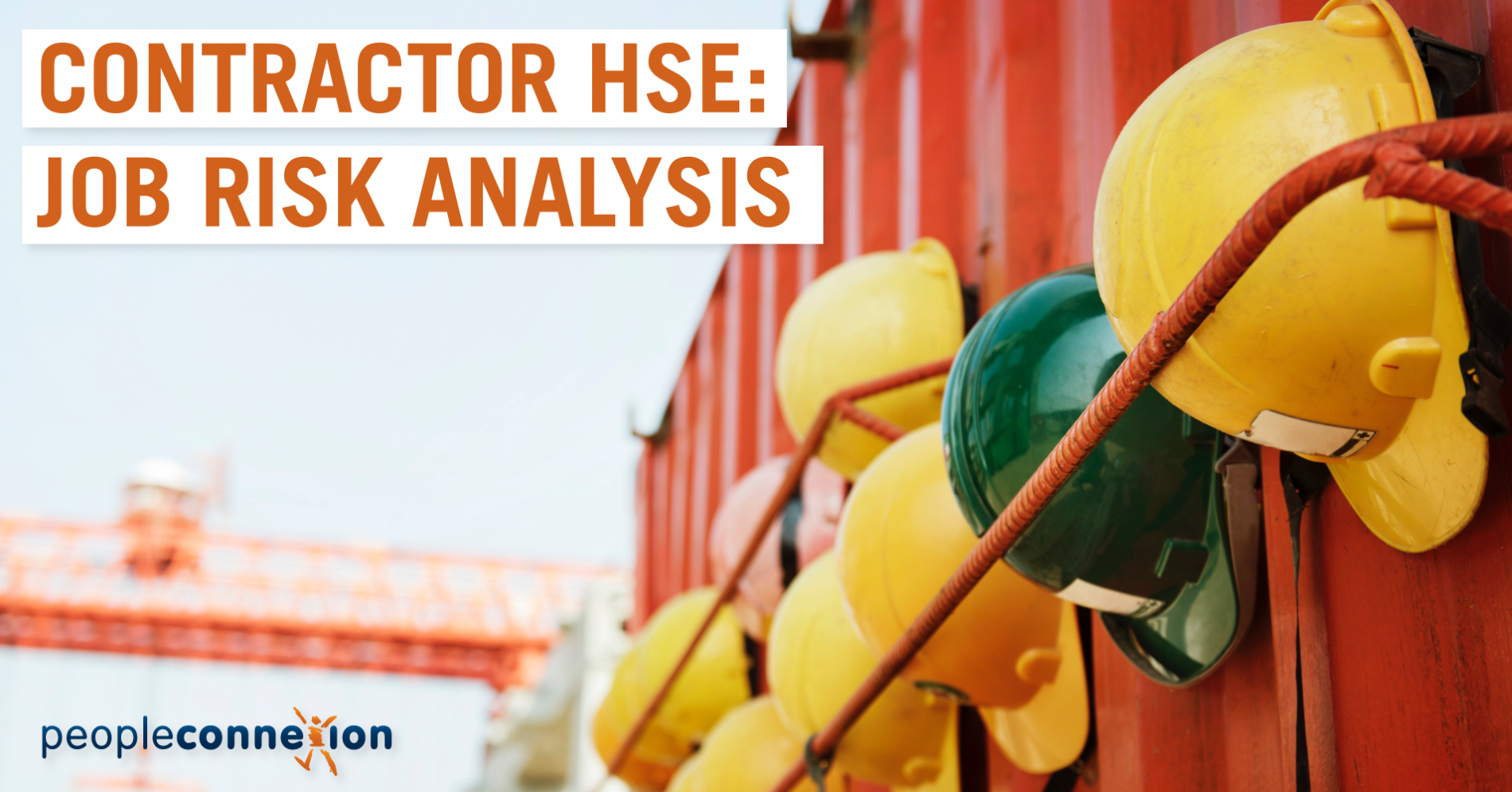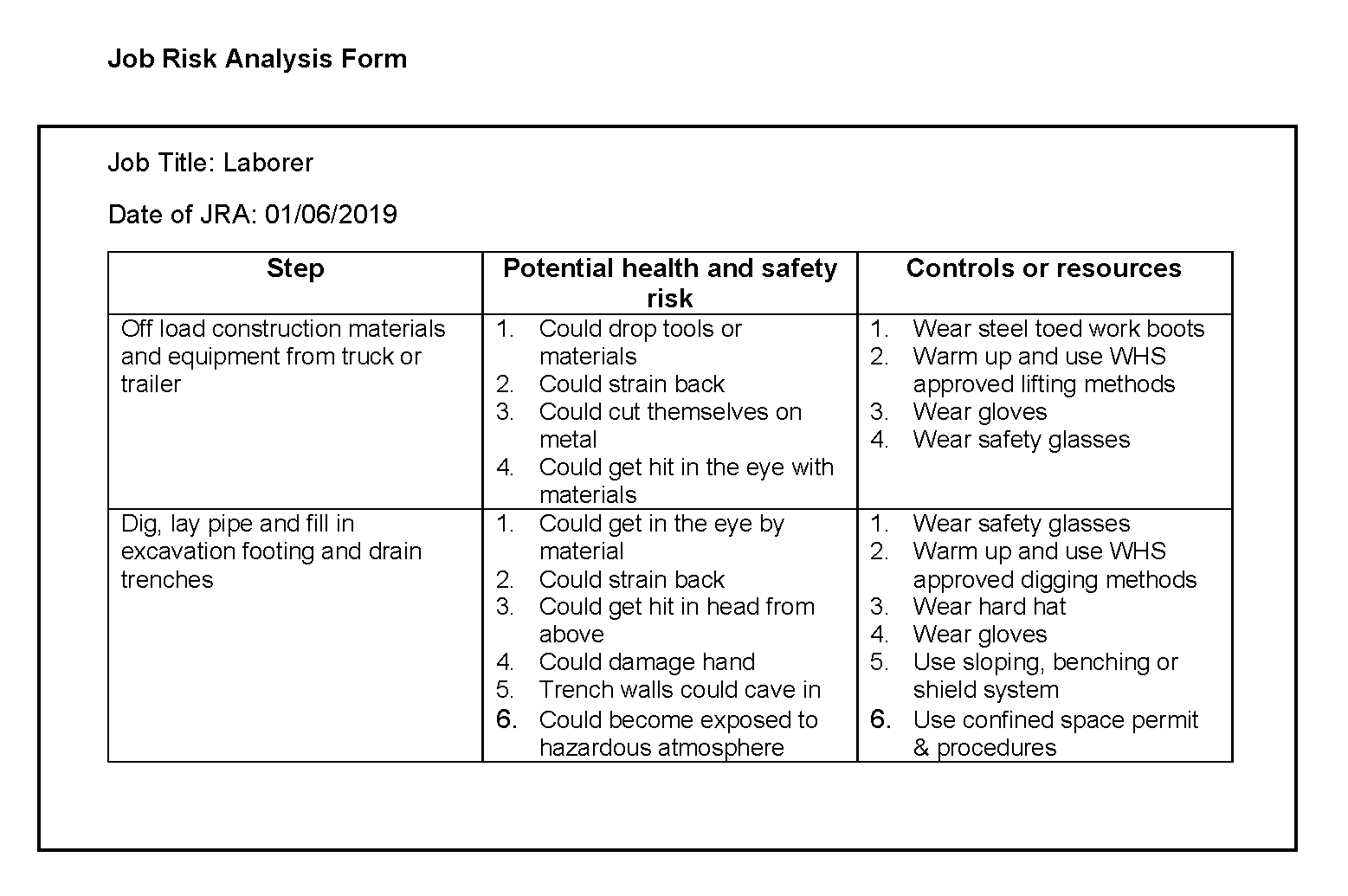Job Risk Analysis

It’s known by many names including Job Risk Analysis (JRA), Job Safety Analysis (JSA), Job Hazard Analysis (JHA) or Task Hazard Analysis (THA).
Call it what you want ? the key thing is that you understand what a JRA is and why it’s so important to complete prior to commencing a job.
What is it?
A ?Job Risk Analysis? is defined as a system that examines job tasks to pinpoint hazards before they occur.
The system observes the connections between worker, task, tools and environment. After identifying the hazards, the user takes step to reduce or eliminate them.
Why do we do Job Risk Analysis?
Companies, especially those that deal in manual labor, are responsible for keeping their workplaces safe. Many have found that the best way of determining hazards and minimizing the risks associated with those hazards is by having employees perform a JRA before every job.
JRAs not only help prevent injuries and incidents, they also can aid in auditing, training and incident investigations.
By completing JRAs and creating subsequent protocols for employees to follow, companies gain the following benefits:
- Help prevent and eliminate hazards
- Reduce injuries and illnesses
- Lower workers? compensation costs
- Increase productivity
How do I do a JRA?
A JRA involves three elements.
- Break the job task into steps
- Identify possible risks for each step
- Establish strategies that will reduce or eliminate each risk
Breaking down the job
To break down the job, follow these steps:
- Observe a worker performing the job
- List each step in order, starting each step with an action verb
- Go over the steps with workers who perform the task to ensure nothing was missed
Identifying the risks
The, pinpoint the hazards, these could be chemical, biological, ergonomic or environmental. To determine possible hazards ask the following questions:
- What could go wrong?
- What would be the consequences?
- How could that occur?
- What other factors contribute to the hazard?
- What is the likelihood the hazard would occur?
Reducing or eliminating each risk
- To prevent or fix hazards to prevent accidents occurring, please follow the below steps
- Determine a different way to perform the task
- Change the conditions that result in the hazard
- Alter the procedure
- Lower the frequency of the task
Engineering controls can eliminate a hazard by altering a machine or workplace to prevent exposure to a hazard, examples include ventilation and machine guards. If engineering controls are impossible, administrative controls such as training or rotating jobs may be an options. For further protection, personal protective equipment (PPE) can help.
Examples of Job Risk Analysis:

